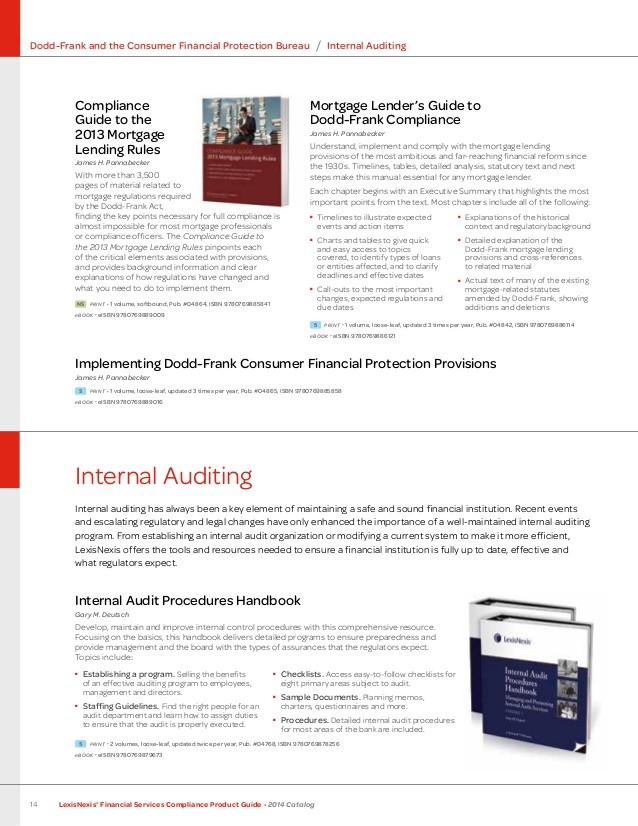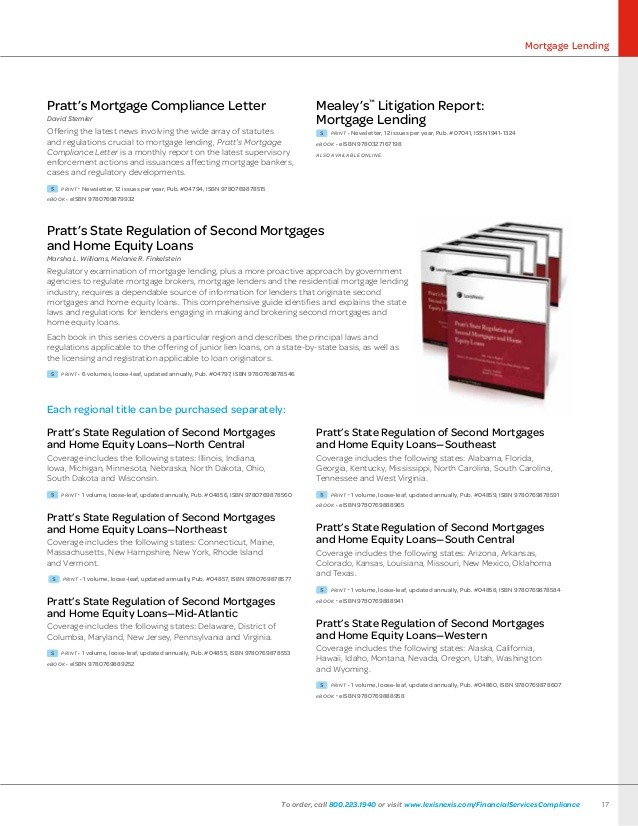Check Up on TruthInLending Changes for Real Estate Lending Sheshunoff Consulting Solutions
Post on: 1 Июль, 2015 No Comment

Make sure that your institution is ready for a compliance examination, please fill out this form or call 800.477.1772.
Email *
Best time to contact me *
2009 was a big year for Truth in Lending changes. Two significant rule changes affecting consumer real estate loans have necessitated major procedural changes in lending operations. Last July new rules requiring early disclosures became effective, and on October 1, the rules for higher priced mortgages went into effect. It is vital that financial institutions revise all loan origination procedures, loan servicing procedures and compliance audit programs to ensure compliance in 2010.
To perform a check up on these procedures and workprograms, here’s an overview of the most important elements of the 2009 Regulation Z real estate loan revisions. We’ve included some checklists of necessary procedural requirements.
Now is a great time to make sure that your institution is ready for a compliance examination.
New Early Disclosure Requirements
One of the biggest changes to the rules is the expanded coverage. Any consumer loan secured by a dwelling that is covered by RESPA is subject to the early disclosure rules. Previously early disclosures were required only on loans to purchase principal dwellings. Now all types of dwelling secured loans are covered—including home improvement loans and home equity loans, for example. HELOCs are not covered by RESPA so early disclosures are not required. Exhibit A is a decision tree that can assist you in determining which loans are covered by the new rule.
Required Disclosures and Waiting Periods
On all consumer dwelling secured loans covered by RESPA, early TILA disclosures must be provided within three business days of the application date and at least seven business days prior to the loan closing. The institution should begin counting the business days for closing the loan from the date the disclosures were mailed or delivered to the customer .
For purposes of determining when the disclosures have to be delivered, a business day is any day the lender is open for conducting substantially all of its business operations.
When an early TILA disclosure is mailed, the lender may presume that the consumer received the disclosures three business days after being placed in the mail. However, this definition of “business day” is different. For presumed receipt of the disclosure the lender should count all calendar days except Sundays and legal holidays specified by law. Saturdays are always counted.
To illustrate the new rule, consider this example :
Exhibit B
The lender receives an application on Friday, April 2. The lender is not open on Saturday, except for the purpose of cashing checks and taking deposits, therefore, Saturday is not counted as a business day in determining the three day deadline to get the TILA disclosures in the mail to the applicant. So the disclosures must be mailed no later than the next Wednesday, April 7.
Assume that the lender mailed the disclosures on Wednesday, April 7. When can the lender assume that the consumer received them? For this purpose, the lender always counts Saturdays. even though the lender’s offices are not open on that day to conduct substantially all of its business operations. Therefore, the lender can consider that the consumer received the early disclosures on Saturday, April 10. After this date, the lender can charge a loan-related fee.
When can the lender close this loan?
The disclosures must be mailed or delivered no later than the seventh business day prior to closing the loan. Since the disclosures were mailed on Wednesday, April 7, the loan closing can occur on or after Thursday, April 15. For purpose of counting the seven business days, the lender counts all business days except Sunday and federal holidays.
What if the APR changes?
If the APR becomes inaccurate (that is, if it changes more than 1/8 of 1 percent in a regular transaction and 1/4 of 1 percent in an irregular transaction), the lender must provide corrected disclosures that include all changed terms. The consumer must receive the corrected disclosure no later than three business days prior to the loan’s consummation. So, when corrected disclosures are given, count from the date the consumer receives the disclosures—not the date they were mailed.
What is an irregular transaction?
An irregular transaction is one with at least one of the following characteristics:
- Multiple advances
- Irregular payment periods (except for an irregular first payment)
- Irregular payment amounts (except for the first or last payment)
Rule for the Timing of Fees
The lender may not charge anything except a fee for obtaining a credit report until the consumer has received the early disclosures. The commentary issued with the rule indicate that fees may not be either “imposed” or “collected”, so it would not be advisable to obtain a check and agree to hold it until the disclosures are received.

The lender should have procedures to determine when the consumer has received the disclosures. All disclosures that are mailed or delivered by overnight messenger or electronically are presumed to be received on the third business day after they are sent unless the lender has documentation of actual receipt. For this purpose, the lender should count all days except Sunday and federal holidays in determining when disclosures are presumed to be received. If the consumer receives the disclosures in person, the lender can charge the fee at that time—if it is mailed, the fee should be charged no earlier than the next day following presumed receipt.
Exhibit B is a flowchart that illustrates the timeline for how this rule works.
Can the early disclosure waiting period be waived?
Yes, but only in the case of a bona fide personal emergency. The borrower must provide a statement that is signed and dated, that waives his right to the waiting period and that is not pre-printed.
Checklist for Compliance With the MDIA Early Disclosure Rule
- Determine that all early TILA disclosures have the following language “You are not required to complete this agreement merely because you have received these disclosures or signed a loan application” in the federal box. Develop procedures to determine when an application is received. The lender can determine what items of information it needs to consider that an application is received. However, for fair lending purposes, the lender should make sure that it requires the information on a consistent basis. Check procedures to determine that early disclosures will be provided within three business days from receiving an application for all consumer-purpose loans to be secured by a dwelling (including purchase, home equity, home improvement, etc.)-don’t count federal holidays, but count all other days that your offices are open to conduct substantially all business operations. Make sure that all appropriate personnel are aware of what loans are covered. Disclosures may be provided to one applicant when there are multiple ones. Develop a system to document when the applicant(s) will be considered to have received disclosures that have been mailed (for this purpose count all calendar days except Sundays and federal holidays). If you want to close the loan at the earliest possible time, give the disclosures to the applicant in person. If you mail or otherwise deliver the disclosures, you will need to allow three business days even if you have them delivered by a service or email them. You may use the actual date of delivery if you have documentation for it. Implement a control to ensure that no fees are charged (except for a bona fide credit report fee) until the consumer can be presumed to have received the disclosures. If you give the disclosures to the applicants in person—you can collect the fee at that time. Implement a tracking system to insure that mortgage loans will not close until seven business days after the early disclosures have been mailed or delivered (don’t count Sundays or federal holidays for this purpose.) Establish a system to review all early TILA disclosures at least three business days prior to the loan’s closing to determine that they remain correct. If the APR has changed outside the tolerance, re-disclose and make sure that there is a three day waiting period before consummation. (For purposes of this requirement, don’t count Sundays and federal holidays .) The three days runs from when the applicant RECEIVES the disclosure, so if you want to close at the earliest possible time, give the disclosure to the applicant in person and have him or her sign for the receipt. Develop procedures for handling waivers of the early disclosure waiting period, including the requirement to receive a written, signed and dated waiver that specifically describes the personal emergency. Make sure all financial emergencies are documented in detail and that no lender printed forms are used. Train (and re-train, as necessary) all lenders, lending assistants, loan operations review personnel, etc. on the requirements
Higher Priced Mortgage Loan Rules
There are also new rules for higher priced mortgage loans (HPMLs) if the application was received on or after October 1, 2009. These rules apply to loans secured by a borrower’s principal dwelling but do not cover interim construction loans, HELOCs, bridge loans or reverse mortgages.
If the loan is covered, dwelling, the lender must compare the rate that is offered to the applicant to the Average Prime Offer Rate (APOR) published weekly by the Federal Reserve.
If the loan rate is at least 1.5% greater than the APOR for first lien transactions or at least 3.5% greater than the APOR for subordinate lien transactions, the HPML rules apply.
When making HPMLs, lenders are required to determine the borrower’s repayment ability and restrict prepayment penalty provisions in the loan agreements. After April 1, 2010, lenders will be required to set up escrow accounts and collect funds for the payment of property taxes and required insurance on loans where applications were received after that date.
In order to determine the borrower’s ability to repay the loan, the lender must consider the borrower’s:
- Current and reasonably expected income
- Employment
- Assets (other than the collateral)
- Current obligations
- Mortgage-related obligations
Income should be verified using third party documents such as pay stubs, W-2s and the like. Reasonably foreseen reductions in income must be taken into consideration also (such as when the applicant tells the lender that he plans to retire next year). Mortgage related obligations like taxes, home owner association fees and assessments and piggy-back second mortgages must be considered.
The law allows lenders to have a “presumption of compliance” with the determination of the borrower’s ability to repay the loan if lender:
- Verifies the applicant’s income and obligations
- Considers the applicant’s ability to repay the loan’s largest payment during the first seven years of the mortgage, and
- Assesses the borrower’s ability to repay by using the total debt-to-income or the borrower’s income after all obligations are paid
Loans can be legal if these three elements are not met, but the lender will not have a presumption of compliance if the borrower brings a lawsuit in the future. In addition, there can be no presumption of compliance if the loan negatively amortizes or if it has a term of less than seven years and does not fully amortize.
There was some indication at the time the rules were first issued that balloon loans with terms of less than seven years would not be legal; however, the Federal Reserve issued an interpretation stating that, if the lender complies with the obligation to determine the borrower’s repayment ability, the loan can be in compliance, but the presumption of compliance would not be available to the lender.
Documentation of the borrower’s ability to repay should be in every HPML file to protect the lender and make compliance examinations easier. A HPML checklist appears as Exhibit C to this article.














